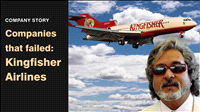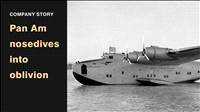History of Hovercraft Part 1 | Industry study | Business History
By Kiron Kasbekar | 20 Nov 2023
If you’ve been a James Bond movie fan, you may recall seeing Bond rushing through a forest in a hovercraft. He was being chased by North Korean army men, and they were riding on even more powerful hovercraft.
The movie was Die Another Day.
Tense scenes. One after another. But Bond doesn’t get captured and killed. He escapes. Of course, he has to – else, how would the film continue?
In the normal world, steering a zigzagging hovercraft at high speed through a forest would be a highly dangerous thing to do. Especially with a bunch of hostiles in their own big and small hovercraft, zigzagging, chasing you and shooting at you.
Thankfully, that’s not what happens in the real world.
A hovercraft ride over water is not so tension-filled or dangerous. The ride may be somewhat bumpy, because of the way the craft rides on the waves, and noisy, because of the huge turbo fans mounted at the rear. But there are no North Koreans or any other hostiles shooting at you!
While these amazing craft are used mostly for peaceful purposes, such as marine and riverine rescue, or travel over ice-bound expanses, they are also used for military purposes. In fact, some armed forces and coast guard forces have maintained hovercraft for use in action that requires seamless transition from water to land and land to water.
Today hovercraft are used in a wide variety of civilian as well as military operations. And I’ll discuss those in a little while. But, before that, let us look at the history of hovercraft.
In one sense, the prehistory, if you can call it that, of hovercraft coincides with the prehistory of flying. When humans began to imagine that they could fly one day, I am sure they also dreamt they would float one day, and glide over the earth and over water.
The thought of flying at an altitude of over 40,000 feet, that is, over seven and a half miles above the earth, as today’s jet airliners do, would not have occurred to them. They would have imagined vehicles that would hover in the air over houses and streets, and at best hang around at cloud level, to be seen by people below.
Tales were spun about godlike beings that could soar into the skies in flying chariots. About beings that could float over the ground and be wherever they wished to be in an instant. About objects being made to float in air. Yogis levitating. And such other flights of fancy.
But all that remained in the realm of imagination. Until the middle of the 20th century.
That was when Christopher Cockerell, an English engineer, came up with a revolutionary new idea of how a vehicle could move as easily over water as on land. Without fully entering the water or hitting the land hard and bumping over it as it moved.
Airplanes had been invented a half century earlier. But airplanes cannot float a few feet above ground. Even helicopters, which fly differently compared with airplanes, are not meant to hover; they are supposed to rise and fly a couple of kilometers above the ground or sea. And they certainly cannot move on water like a boat or on land like a car!
When you want a vehicle that moves ahead on sea or land as well as hovers just a bit above the surface, you need a hovercraft.
And in this video we shall look at the history of hovercraft.
Before I go further into the history of hovercraft, let me explain what a hovercraft is. I am sure most people have not seen a hovercraft, except in pictures and videos, let alone traveled on one. So it needs a small explanation.
To begin with, a hovercraft is not an aeroplane. It is also not a boat. Nor is it a truck. None of these, although it performs some of the functions of all these vehicles. It moves over water and in the air, and can move over land too.
Inventors had tried to create hovercraft since the early 1870s, when British engineer John Isaac Thornycroft experimented with a boat that was supported by an air cushion.
Thornycraft’s craft was not really a hovercraft. It was more of a speedboat than a hovercraft. His plan was to reduce friction by reducing contact with the water, thus adding speed, and in that he did meet success.
Many inventors in America, Austria, Britain, Finland, France, Italy and the Soviet Union attempted to build hovercraft. But when they made their attempts, the engine technology of the time was not advanced enough to make their designs practical.
During the 1920s and 1930s, a number of other inventors tried to design hovercraft. In 1931, Finnish engineer Toivo J. Kaario built a prototype hovercraft called the Pintaliitäjä, which means ‘surface glider’ in Finnish. His design used a flexible skirt and a fan to create a cushion of air, and the vehicle was able move at speeds of up to 20 knots (37 km/h).
In 1937, Soviet engineer Vladimir Levkov built a prototype hovercraft called the L-5. His design was similar to Kaario's, but it used a solid-sided skirt instead of a flexible one. The L-5 was able to achieve speeds of up to 70 knots (130 km/h), making it the fastest hovercraft of its time.
These were basically prototypes, and never reached the stage of commercialization. Before that could happen, the Second World War intervened. The war applied brakes on the development of hovercraft.
Then, in 1955, British inventor Christopher Cockerell patented a new type of hovercraft skirt that was more efficient and stable than previous designs.
Cockerell’s inspiration to invent hovercraft came from witnessing the Allied forces’ D-Day landings on the French coast in 1944, towards the end of the Second World War. He observed the difficulty of getting troops and equipment ashore quickly and efficiently, and the heavy casualties that resulted from enemy fire; and he thought that something like a hovercraft could provide a solution. A vehicle that could move from sea to land, and from land to sea, without stopping.
In 1947, Cockerell and his wife bought a caravan-building and boat-hiring business. But Cockerell’s true passion lay in designing high-speed boats. As he built his boats, he kept feeling frustrated by the problem of water resistance, which slowed the boats down. So he began to try out ways to build a high-speed boat that could travel faster.
He was hindered by the persistent obstacle faced by naval engineers: and that was what is known as ‘drag’, or the resistance to movement caused by a vessel traveling through water. Eventually he realized that if he could create a cushion of air between the hull of the boat and the water, the resistance would be dramatically reduced.
That was how Cockerell created his small experimental hovercraft in his garage in 1953. Realizing that his idea could be the key to designing swift boats, he embarked on constructing a model.
What he did was truly revolutionary. Instead of using traditional boat components, he used two nested cylinders linked to an air pump. The air pump would blast a stream of air downwards, and that would hold the boat above water while a fan would drive it forward just as a propeller drives an aircraft forward.
Cockerell continued to refine his design, and in 1955 he patented the hovercraft.
However, for the project to take off, Cockerell needed more funds than he had. He was unable to find a private sector investor for his hovercraft idea. Neither aircraft manufacturers nor shipbuilders saw hovercraft as part of their core business. They all turned him down.
So Cockerell turned to the British government, hoping to get it interested in the potential military applications of hovercraft. Sadly for him, the military establishment did not show any interest in funding the project; and what was worse was that the government notified hovercraft as ‘classified’, so Cockerell could not take it public.
The hovercraft continued to be classified until 1958. In that year it was declassified after it came to be known that there were similar developments elsewhere in Europe.
Cockerell was then introduced to the National Research Development Corporation (NRDC), which used his design to place an order with aerospace company Saunders-Roe for the first full-scale hovercraft, the SR.N1.
The SR.N1, which was displayed before the public on 11th June 1959, could carry four people and move at a speed of 28 miles per hour.
Sometime later, on 25 July of the same year, this hovercraft successfully crossed the English Channel from Calais to Dover. This was 50 years to the day after Louis Blériot flew the historic first airplane flight across the English Channel in 1909.
The success of the 4-seater SR.N1 led to the development of larger and more powerful hovercraft.
In January 1959, the NRDC formed a subsidiary called Hovercraft Development Ltd., with Cockerell as technical director. The company controlled the hovercraft patents and licensed several private sector firms to manufacture the craft under the registered trademark ‘Hovercraft’.
Well, on that note, I have come to the end of Part 1 of this story. The second part will follow in a few days. Do watch it to see what happens to Cockerell’s dream.
Read part 2: Andrew Carnegie: History of hovercraft Part 2




























